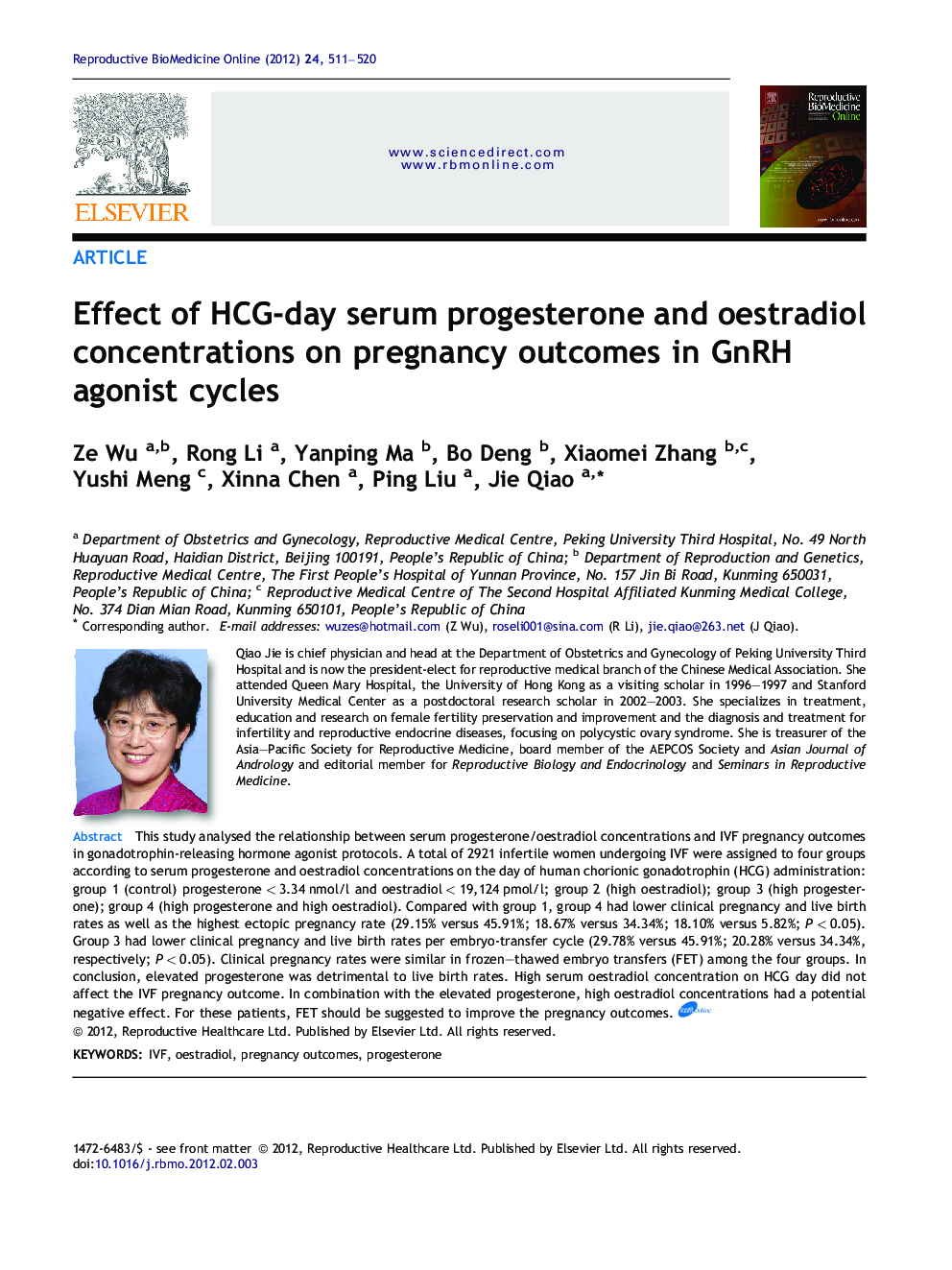| Article ID | Journal | Published Year | Pages | File Type |
|---|---|---|---|---|
| 3970516 | Reproductive BioMedicine Online | 2012 | 10 Pages |
This study analysed the relationship between serum progesterone/oestradiol concentrations and IVF pregnancy outcomes in gonadotrophin-releasing hormone agonist protocols. A total of 2921 infertile women undergoing IVF were assigned to four groups according to serum progesterone and oestradiol concentrations on the day of human chorionic gonadotrophin (HCG) administration: group 1 (control) progesterone < 3.34 nmol/l and oestradiol < 19,124 pmol/l; group 2 (high oestradiol); group 3 (high progesterone); group 4 (high progesterone and high oestradiol). Compared with group 1, group 4 had lower clinical pregnancy and live birth rates as well as the highest ectopic pregnancy rate (29.15% versus 45.91%; 18.67% versus 34.34%; 18.10% versus 5.82%; P < 0.05). Group 3 had lower clinical pregnancy and live birth rates per embryo-transfer cycle (29.78% versus 45.91%; 20.28% versus 34.34%, respectively; P < 0.05). Clinical pregnancy rates were similar in frozen–thawed embryo transfers (FET) among the four groups. In conclusion, elevated progesterone was detrimental to live birth rates. High serum oestradiol concentration on HCG day did not affect the IVF pregnancy outcome. In combination with the elevated progesterone, high oestradiol concentrations had a potential negative effect. For these patients, FET should be suggested to improve the pregnancy outcomes.The aim of this study was to analyse the relationship between serum progesterone/oestradiol concentrations and IVF pregnancy outcomes in gonadotrophin-releasing hormone agonist protocols. A total of 2921 infertile women undergoing IVF were assigned to four groups according to their serum progesterone and oestradiol concentrations on the day of human chorionic gonadotrophin (HCG) administration: group 1 (control) progesterone < 3.34 nmol/l and oestradiol < 19,124 pmol/l; group 2 (high oestradiol); group 3 (high progesterone); group 4 (high progesterone and high oestradiol). Compared with group 1, patients in group 4 had lower clinical pregnancy (29.15% versus 45.91%) and live birth rates (18.67% versus 34.34%) as well as the highest ectopic pregnancy rate (18.1% versus 5.82%) (all P < 0.05). Those in group 3 had lower clinical pregnancy and live birth rates per embryo transfer cycle (29.78% versus 45.91%; 20.28% versus 34.34%, respectively, P < 0.05). Embryo quality appeared to be unaffected since similar clinical pregnancy rates in frozen–thawed embryo transfer (FET) cycles among the four groups. In conclusion, elevated progesterone was detrimental to live birth rates. A high serum oestradiol concentration on the day of HCG administration did not affect the IVF pregnancy outcome. In combination with the elevated progesterone and oestradiol concentrations had a potential negative effect. For these patients, FET should be suggested to improve the pregnancy outcomes.
